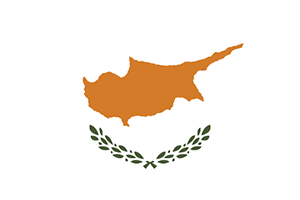Cyprus - Country Background Information
- Describing the forms of education in the country
- Identifying an ‘inclusive setting’ in the country
- What an ‘official decision of SEN’ means in the country
- What ‘out-of-education’ means in the country
The EASIE data collection covers all forms of education at ISCED levels 02, 1, 2 and 3. This means any type of education organised by any approved / recognised educational provider: municipality, local or regional educational provider from the public or private sector, working with/for ministries responsible for education and areas such as health, social, welfare, labour, justice etc.
4 years and 8 months – 15 years
What are the typical age ranges for the ISCED levels?
| ISCED LEVEL 02 | ISCED LEVEL 1 | ISCED LEVEL 2 | ISCED LEVEL 3 |
|---|---|---|---|
| 3-5 | 6-11 | 12-14 | 15-17 |
For the EASIE data collection, an inclusive setting is operationally defined as a recognised form of education where the child/learner follows education in mainstream classes alongside their peers for the largest part –80% or more –of the school week.
80% clearly indicates that a child/learner is educated in a mainstream class for the majority of their school week. At the same time, it acknowledges possibilities for small group or one-to-one withdrawal for limited periods of time (i.e. 20% or one day a week).
Not all countries are able to provide exact data relating to the 80% time placement benchmark. Therefore, proxies –alternative data that can be used to represent the 80% benchmark –have been agreed upon.
For the EASIE data collection, the agreed operational definition is an official decision leads to a child/learner being recognised as eligible for additional educational support to meet their learning needs. Countries may have different types of official decision, but for all official decisions:
- There has been some form of educational assessment procedure involving different people. This procedure may involve the child/learner; parents; school-based team members, as well as professionals from multi-disciplinary teams from outside the child’s/learner’s (pre)school.
- There is some form of legal document (plan/programme etc.) that describes the support the child/learner is eligible to receive, which is used as the basis for decision making.
- There is some form of regular review process of the child/learner’s needs, progress and support.
An official decision leads to a child/learner being recognised as eligible for additional educational support to meet their learning needs. More information on special education is available on the Ministry website.
There has been some form of educational assessment procedure involving different people. This procedure may involve the child/learner, parents, school-based team members, as well as professionals from multi-disciplinary teams from outside the child’s/learner’s (pre-)school. More information on special education is available on the Ministry website.
There is some form of legal document (plan/programme, etc.) that describes the support the child/learner is eligible to receive, which is used as the basis for decision-making. More information on special education is available on the Ministry website.
There is some form of regular review process of the child/learner’s needs, progress and support. More information on special education is available on the Ministry website.
Within the EASIE data collection, specific questions examine children/learners who are out-of-education. This means children/learners who should, by law, be in some form of recognised education, but who are out of any form of recognised education. A recognised form of education is any type of education organised by or approved by any recognised educational provider in the public or private sector.
This means children/learners who should, by law, be in some form of recognised education, but who are out of any form of recognised education. A recognised form of education is any type of education organised by or approved by any recognised educational provider in the public or private sector.
